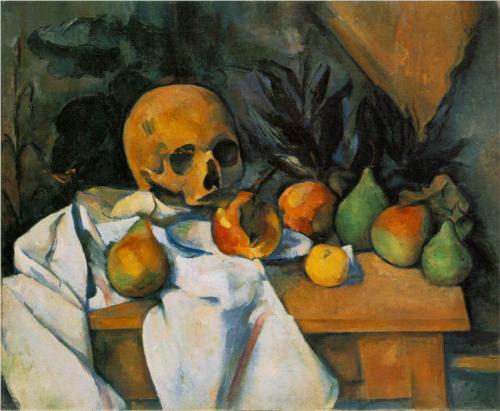All CLEP Humanities Resources
Example Questions
Example Question #61 : Twentieth And Twenty First Century 2 D Art
The American painter who painted canvases of large blocks of color with broad, visible brushstrokes is __________.
Georgia O'Keefe
Andy Warhol
Mark Rothko
Grant Wood
Jackson Pollock
Mark Rothko
Utilizing large canvases featuring only one or two bold colors in large blocks, Mark Rothko deconstructed the principles of Abstract Expressionism to their simplest form. Beginning in 1949, Rothko's "multiforms" became his chief artistic format, and made him a world-famous artist.
Example Question #391 : 2 D Art
The Mexican artist Diego Rivera was most well known for working in what medium?
Collage
Mosaics
Photography
Printmaking
Murals
Murals
Diego Rivera began his artistic career in Paris during the first decade of the twentieth century as a cubist influenced by Picasso. On moving back to his native Mexico in the 1910s, Rivera began embracing revolutionary politics, more direct figures, and native Mexican culture, as well as painting massive murals on the sides of buildings. These murals made Rivera much more successful, and produced many different commissions around the world.
Example Question #351 : 2 D Art
A work of art that is a compilation of various images put together in one piece is known as a __________.
cast
mosaic
collage
mural
fresco
collage
A collage is constructed not as one image, but by compiling a variety of images into one larger piece. This can be done for a variety of reasons, including ironic juxtaposition, social commentary, or refreshing traditional imagery. Collages became more widely used in the twentieth century as various forms of media were brought into widespread use.
Example Question #361 : Ap Art History
Jackson Pollack is well known for what distinctive artistic style?
Mosaic
Roller painting
Drip painting
Collage
Screen-printing
Drip painting
Jackson Pollack began his career as an expressionist painter, using representative shapes and traditional methods. Beginning in the late 40s, however, Pollack began using the technique of "drip painting," which involved laying the canvas on the floor and splattering liquid paint on it from above. This produced paintings that were extremely abstract, but vivid and emotional, which garnered Pollack worldwide acclaim.
Example Question #31 : Identifying Artists, Works, Or Schools Of Twentieth And Twenty First Century 2 D Art
What twentieth century artist made large-scale screen prints of famous photographs in outlandish colors?
Robert Rauschenberg
Jackson Pollack
Andy Warhol
Wasily Kandinsky
Mark Rothko
Andy Warhol
Andy Warhol sought to make art that directly engaged and confronted popular culture in unique and surprising ways. Warhol also liked to experiment with methods that had a sense of automation, such as screenprinting. Both of these aspects of Warhol's work were shown in a series of paintings he did in the 1960s, which had images of celebrities like Marilyn Monroe, Elizabeth Taylor, and James Dean reprinted in bright pinks, blues, and greens.
Example Question #1 : Understanding Terminology That Describes Ancient Grecian And Roman 2 D Art
The kind of artwork that features many pieces of glass or tile arranged into a portrait or other image is called a __________.
devotional
fresco
mural
mosaic
diptych
mosaic
While "mosaic" is a very broad term, it refers to any artwork made by assembling together small pieces of glass and tile. Roman artists and architects frequently used mosaics to create artwork in homes and buildings, and these were frequently realistic depictions of people or landscapes. Mosaics are still used by artists today, but can often take on abstract forms.
Example Question #482 : Ap Art History

The above image is a woodblock print, meaning it __________.
can only be shown in a large format
cannot be moved from the place it was first drawn
can be easily replicated in the same form
can have its colors easily changed
can be enlarged and miniaturized easily
can be easily replicated in the same form
The woodblock format, popular throughout Asia, is an artistic format that is produced by having a large piece of wood cut into and dyed by the artist. Thereafter, this woodblock can be printed onto canvas or paper, making it extremely easy to duplicate the work of art again and again.
Example Question #1 : Analyzing The Form Of Nineteenth Century 2 D Visual Art

The composition above is a painting in the genre of __________.
history painting
still life
portrait
landscape
nude
still life
The painter of this work, Paul Cézanne, was particularly noted for his still lifes. The one in this question, "Still Life with Skull," was painted in 1898 and is particularly notable for the inclusion of a skull, a notable feature of Cezanne's later work from the 1890s on. Cézanne's use of broad brushstrokes, layered color, and different perspectives helped create a bridge from impressionism to modern art movements like cubism.
Example Question #1 : 2 D Art In Global Islamic Traditions
What form of art was developed by Islamic artists who did not draw living figures because of proscriptions in the Quran?
Sculpture
Landscaping
Calligraphy
Painting
Architecture
Calligraphy
The Quran, the Islamic holy book, made Muslim artists pursue calligraphy for two different but related reasons. Calligraphy was the easiest mode of transmission for the written Quran in the early years of the religion. Additionally, Quranic prohibitions on creating figurative art made many Muslim artists pursue the geometrical and literary art of calligraphy.
Example Question #1 : Analyzing The Form Of Renaissance 2 D Visual Art
Renaissance art made a dramatic departure from medieval art by __________.
putting more focus on religious subjects
using fewer and less rich colors
None of the other answers
using more realistic depictions of the human form
deemphasizing classical subjects
using more realistic depictions of the human form
During the Renaissance, with a renewed focus on classical art and scientific understanding, visual arts underwent a significant change. In particular, religious themes dwindled in importance in comparison to classical subjects, and deeper, more varied colors were used to represent more realistic depictions of the human form.
All CLEP Humanities Resources



